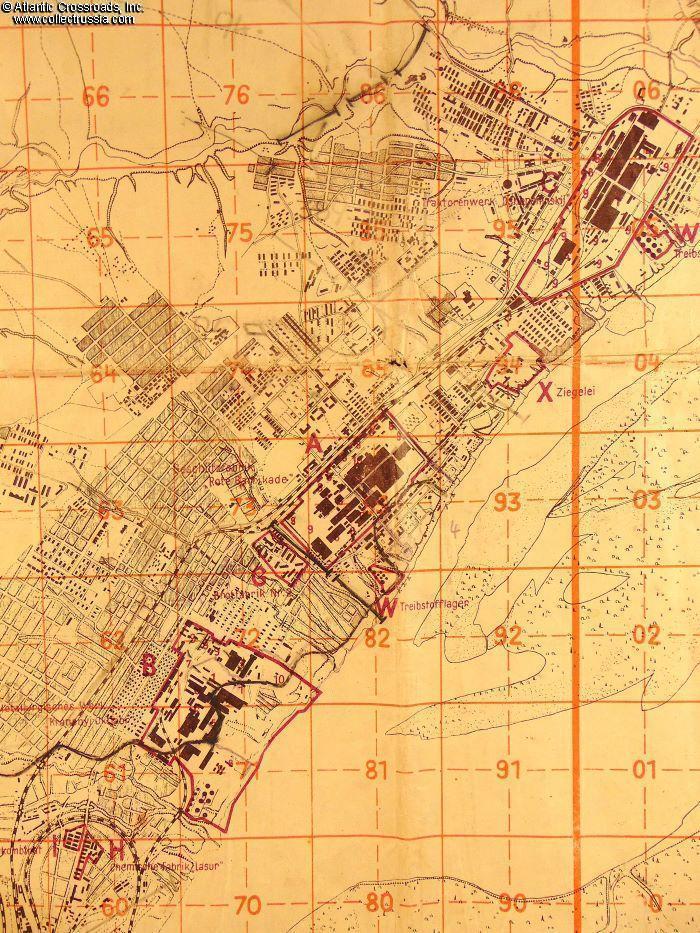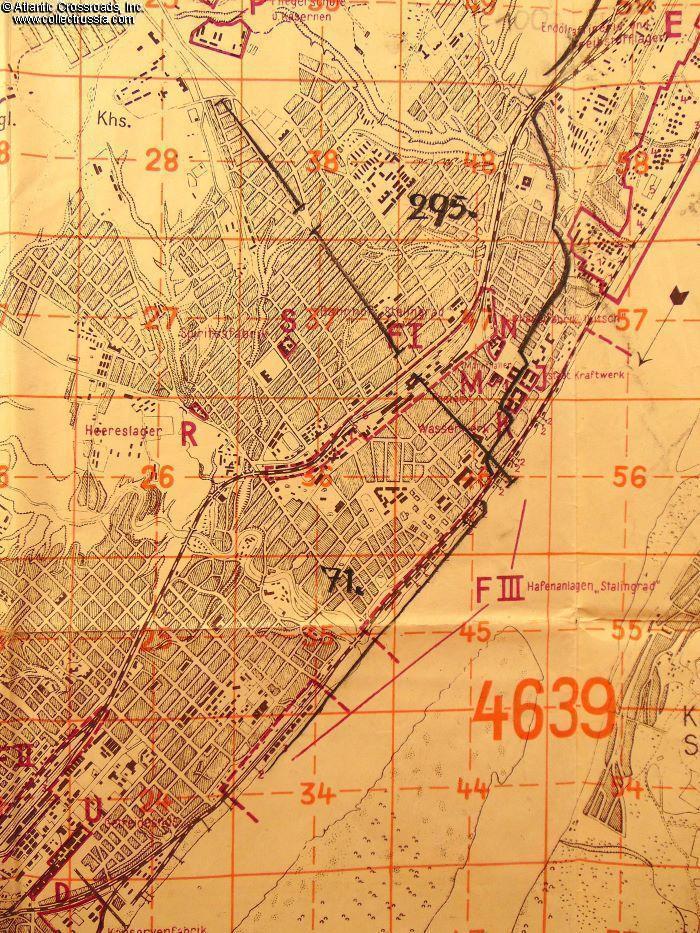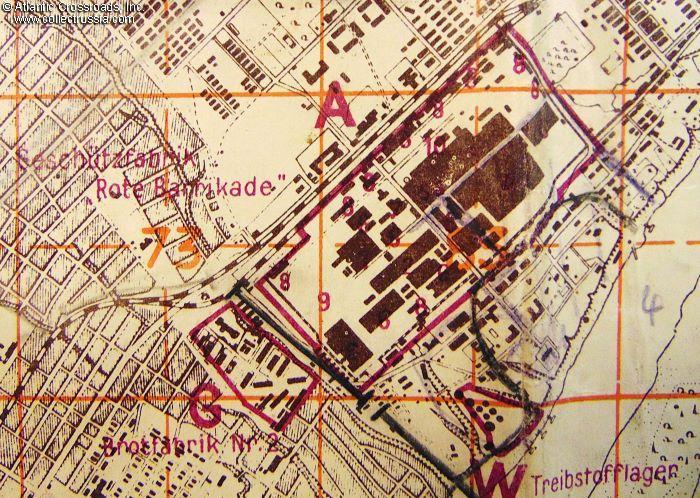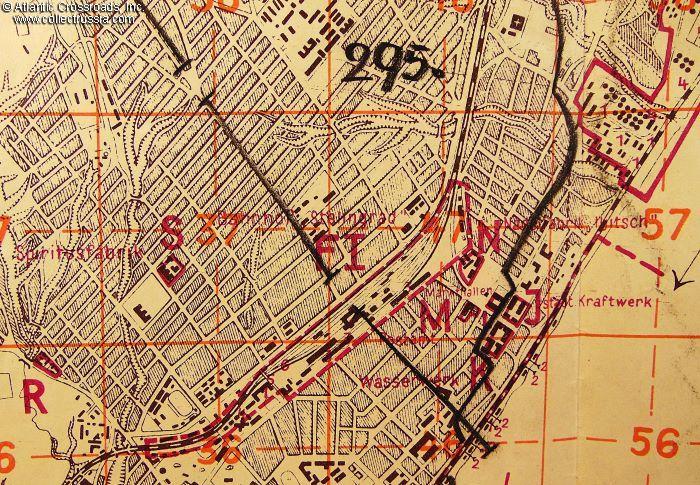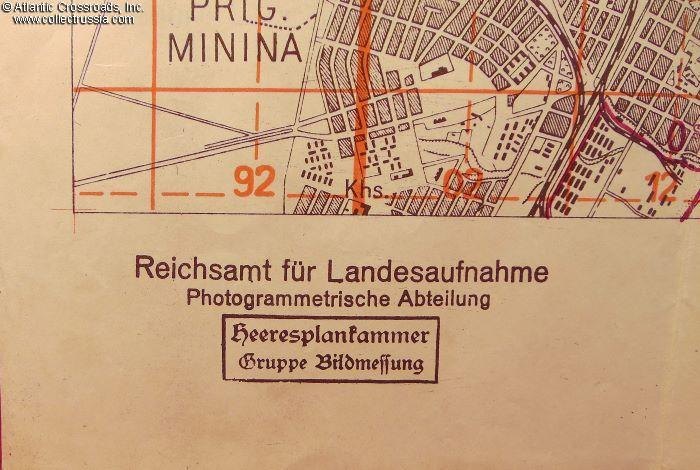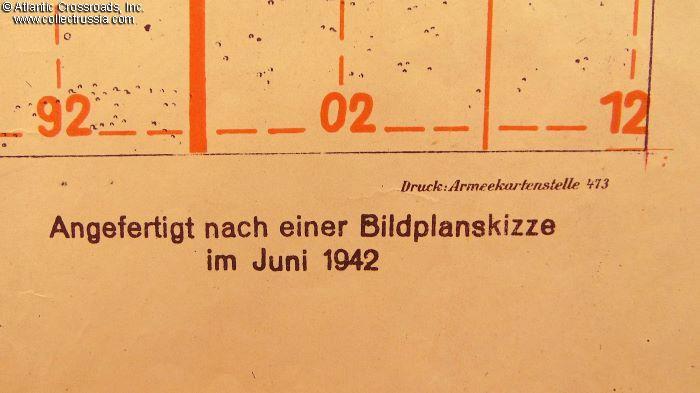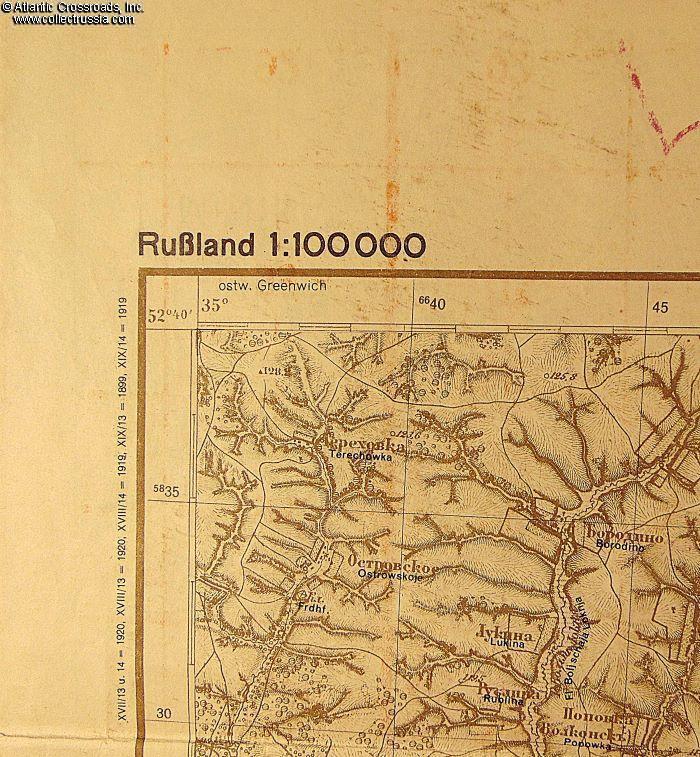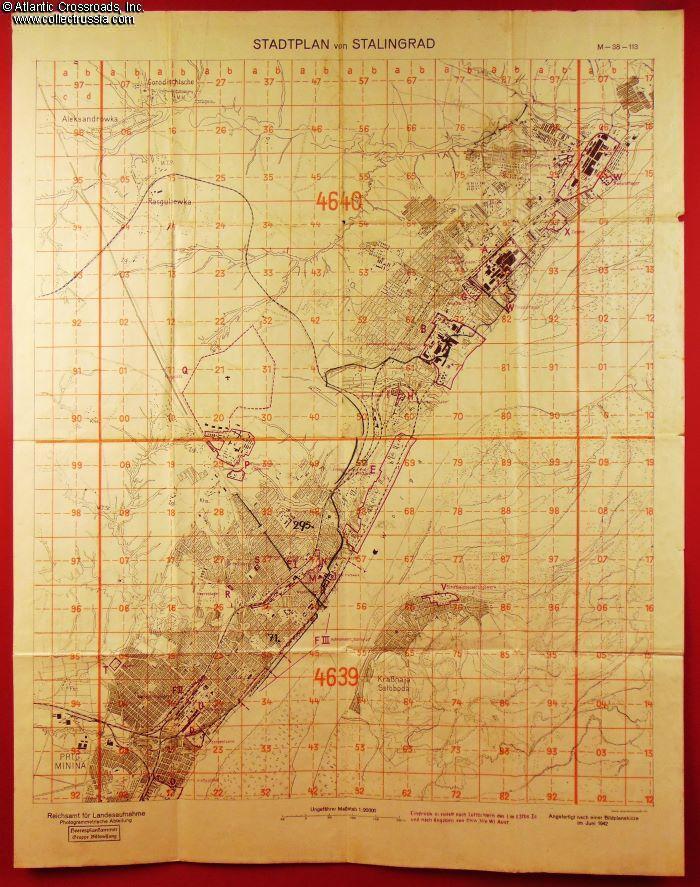
Wehrmacht Map of Stalingrad with a Map of a part of the Kursk Region on the verso, 1942.
Very large format measuring 27 ½" x 35". Two German infantry divisions, 295th and 71st, are identified, and their positions are marked in black pencil. Unfortunately, the map is not dated explicitly, but the tactical markings for the 295th and 71st Rifle Divisions indicate that the map reflects their positions not earlier than the end of September - early October, 1942, and not later than late December. But even though the locations of the 295th and 71st did not change much during those two months, the "meat mincer" ground their troops round the clock. For example, in just two w
Very large format measuring 27 ½" x 35". Two German infantry divisions, 295th and 71st, are identified, and their positions are marked in black pencil. Unfortunately, the map is not dated explicitly, but the tactical markings for the 295th and 71st Rifle Divisions indicate that the map reflects their positions not earlier than the end of September - early October, 1942, and not later than late December. But even though the locations of the 295th and 71st did not change much during those two months, the "meat mincer" ground their troops round the clock. For example, in just two weeks from 26 October to 9 November, the 295th, which consisted then of 7 infantry battalions, was ground in strength from 2 average, 5 weak, and 2 exhausted to 1 average, 5 weak, and 1 exhausted.
The city map is marked in purple, delineating the most important locations for Germans to capture and hold, based on Luftwaffe aerial photography and OKW (Oberkommando der Wehrmacht) directives. Each is assigned a letter of the alphabet and is captioned in German.
A: Geschutzfabrik "Rote Barrikade" - gun factory "Red Barricades"
B" Metallurgisches Werk Krasny Oktiabr - metallurgical plant "Red October"
C: Traktorenwerk "Dshershinskij" - tractor plant "Dzerzhinsky"
D: Konservenfabrik - canning factory
E: Erdolraffinerie und Treibstofflager - oil refinery and fuel storage facility
FI: Bahnhof Stalingrad 1 - railroad station Stalingrad 1
FII: Bahnhof Stalingrad 2 - railroad station Stalingrad 2
FIII: Hafenanladen Stalingrad - Stalingrad port
G: Brotfabrik No.2 - bread factory #2
H: Chemische Fabrik "Lasur" - chemical factory "Azure"
I: Fleischkombinat - meat factory
J: Stadt Kraftwerk - city power plant
K: Wasserwerk - hydroelectric power plant
M: Postamt - Post office
N: Fabrik "Lutsch" - "Luch" factory
O: Sagewerk - sawmill
P: Fliegerschule und Kasernen - pilot school and barracks
Q: Flugplatz - airfield
R: Heereslager - army camp
S: Spritusfabrik - spirits factory
T: Kasernen - barracks
U: Getreidesilos - grain silos
V: Schiffsausbesserungswerk - ship repair works
W: Treibstofflager - fuel depot
X: Ziegelei - brickworks
These are the battleground places that became the landmarks of the great battle.
In excellent condition, showing only the normal folds encountered in military maps. There are no stains or significant tears, the paper is strong and pliant.
The photogrammetric department of the Reich Office for Land Surveying produced fine quality maps while often recycling existing maps. In this case, the reverse of the map of Stalingrad is a December 1940 map which, in turn, was an enlargement of a 1939 Soviet military topographic map. The Germans just added transliterated names of locations. This map covers an area of the northern part of the Kursk Region right where, just a few months later, the northern flank of the German summer offensive, namely the 7th Panzer Division, 2nd Motorized Division, and 11th Infantry Division will make a small advance on the northern face of the Kursk Bulge near the town of Ponyri, about 35 miles east of the neighboring district center of Fatezh that can be seen on the map. The Germans got bogged down there, and were pushed back by the Red Army's Central Front under the command of then General of the Army, and future Marshal, Konstantin Rokossovsky.
This is a unique "fated" map, both sides of which - coincidentally - show the areas of the two major battles of WW2, where the German Army suffered defeat on a scale that very much decided the outcome of the entire war. We can only guess why only two German division are marked on it, and without an explicit date we will not venture any guesses. But it is clearly an important and exciting map, in excellent condition, that will grace any collection of Soviet or German memorabilia related to the Battle of Stalingrad or WW2 in general.
Please note that the 1-ft. ruler in our photos is for size reference.
$3,500.00 Add to cart


